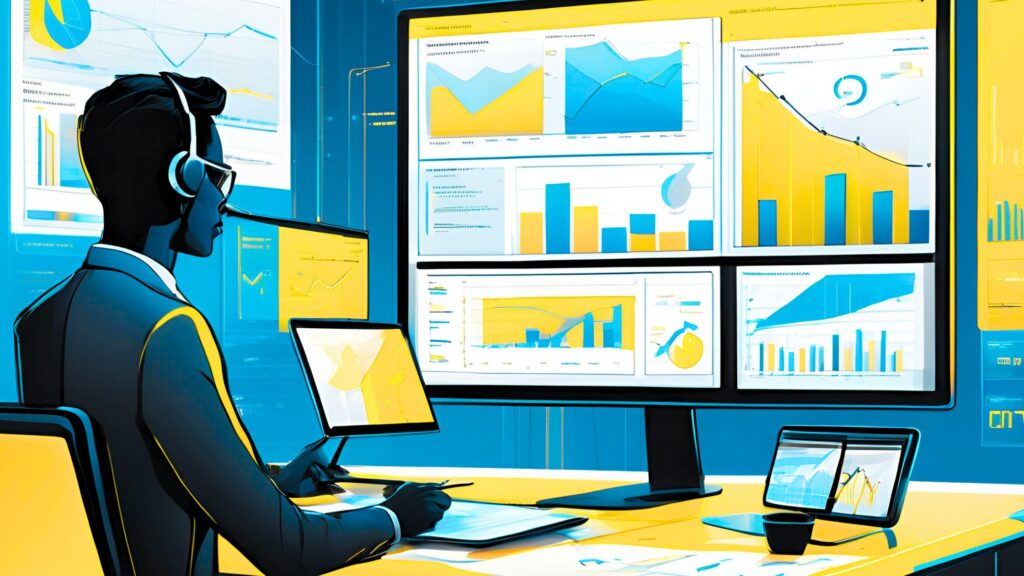Migrating Marketing Automation Platforms in the Age of AI

At Shift, we’re passionate about helping organizations leverage cutting-edge marketing technology to drive growth, efficiency, and scalability. We’ve partnered with thousands of clients, guiding them through every stage of platform migration – from strategic planning and meticulous execution to ongoing optimization. Our expertise ensures a seamless transition of capabilities and integrations.
Migrating marketing automation platforms (MAPs) has always been a complex endeavor, demanding careful planning and flawless execution with high stress and never enough hands to support. Traditionally, factors like database size, data quality, campaign complexity, and existing integrations took center stage. But the emergence of AI-powered features within MAPs adds a new layer of intricacy to the process.
While this evolution introduces new challenges, it also unlocks exciting possibilities. At Shift, we thrive on navigating this complexity and helping our clients harness the full potential of AI-driven marketing automation.
Understanding Your Starting Point
Before diving into a migration, it’s essential to have a crystal-clear understanding of your current marketing automation platform (MAP) and your broader tech stack. This means having up-to-date documentation on everything from data flows and configurations to active campaigns and key features. Think of it as creating a detailed roadmap of your existing landscape. This clarity is crucial for accurate project scoping, resource allocation, and budgeting.
The MAP Migration Game Is Changing with an AI Twist
While traditional migration factors remain incredibly important, as they always have, the rise of AI adds a new dimension to the story. Now, you need to consider how AI-powered features within your legacy system will be handled in the new environment. Will they be:
- Recreated: Can you replicate the same functionality in the new platform?
- Replicated: Can you achieve similar results using other tools in your tech stack?
- Retired: Are these features no longer necessary or cost-effective to maintain?
These decisions depend on several factors, including feature parity between platforms, integration capabilities, and your overall business goals. Here are some common AI-driven features to consider:
- Generative AI content creation: Automatically generate content tailored to user data and preferences.
- Behavioral action workflows: Trigger personalized actions based on AI analysis of user behavior.
- Predictive next best actions: Get AI-powered recommendations for optimal engagement strategies.
- Advanced AI-driven reporting: Unlock sophisticated analytics and insights fueled by machine learning.
- Autonomous agents: Utilize AI-powered bots to automate marketing tasks and interactions.
The Price of AI-Powered Progress
Cost and compliance considerations are always crucial in any MAP migration, but with the introduction of AI, they become even more critical. It’s important to remember that AI-enabled features often come with different pricing models across various platforms. Some might charge based on usage, others on a flat subscription fee, and others still on licensing specific AI functionalities.
Don’t assume that AI pricing structures will be consistent across platforms. A thorough evaluation is essential to estimate future costs accurately. This assessment should consider your anticipated MAP configuration, data usage, and common use cases within the new platform.
Navigating the Compliance Landscape
Migrating AI-enabled features also brings important security, privacy, and data compliance factors to the forefront. Data privacy, algorithmic bias, and model explainability are all key aspects that need careful attention within your migration strategy.
Ensure these critical areas are thoroughly vetted and addressed when planning to move AI features from one platform to another. A robust migration framework should prioritize these considerations to ensure a smooth and compliant transition.
Bringing it to Life: Examples of Real Life Migrations
Let’s make this more concrete with real-world scenarios. Here we’ve drafted three key scenarios we’ve seen with many of our own clients as they make the big moves to migrate or consolidate to a centralized platform MAP inclusive of AI-features.
Example 1: Migrating from Salesforce Marketing Cloud to Marketo
For this first example, imagine migrating from Salesforce Marketing Cloud (SFMC) to Marketo. In the past, this would involve mapping out every single campaign, assessing database size, transferring assets, and integrating systems. Now, we need to add another layer: migrating AI-enabled features.
For this example, let’s focus on SFMC’s Einstein Content Selection. This AI-powered feature optimizes email content by dynamically selecting the most engaging images for each subscriber in real-time based on their behavior. Here’s how AI impacts the migration plan:
- Finding the Equivalent: Does Marketo offer similar AI-driven content personalization? If so, how does it compare to Einstein in terms of functionality, performance, and cost? In this case, Marketo’s ContentAI would be the relevant feature, but it has notable differences in configuration and use cases.
- Data Migration and Compliance: How will the user data and behavioral insights used by Einstein be transferred and integrated with Marketo’s AI capabilities? Critically, will this data transfer comply with data privacy regulations?
- Customization and Retraining: Will any custom models or algorithms from Einstein need to be recreated or re-trained within Marketo? How will this be achieved, and how will any resulting differences be communicated to stakeholders before the migration?
This example highlights the new complexities, but yes also opportunities, that AI brings to the table. It’s not just about moving data and campaigns anymore; it’s about strategically managing AI capabilities throughout the migration process and being logical with that migration.
Example 2: Flipping the Script – Marketo to Salesforce Marketing Cloud
Now, let’s reverse the scenario and explore migrating from Marketo to Salesforce Marketing Cloud. This presents an entirely different set of AI-related obstacles.
Consider Marketo’s Sensei-enabled Dynamic Chat, a generative AI-powered conversational marketing tool. Currently, SFMC lacks a direct equivalent. While Salesforce CRM offers similar functionality, it resides in a different part of the ecosystem. Here’s how this impacts your migration plan:
- Exploring the Salesforce Ecosystem: While SFMC lacks a comparable AI chat feature, you should be able to leverage Salesforce Sales or Service Cloud’s Einstein AI-powered chat capabilities. This could involve collaborating with new teams and potentially adjusting your budget.
- Considering External Alternatives: As an alternative to exploring this capability in the Salesforce Ecosystem, you may also find that looking for a third party solution might fit the needs of the team. To avoid feature gaps, you could enhance your tech stack with a third-party generative AI chat platform like Drift or a similar solution.
- Responsible Retirement: Not every feature needs to be migrated. If you decide against moving Dynamic Chat, ensure stakeholders are informed and that proper sunsetting procedures are followed, including adherence to data compliance practices.
Example 3: From Iterable to Braze – A New Playing Field
Moving away from our Adobe and Salesforce Ecosystems, let’s talk a bit about what this looks like for a migration from Iterable to Braze. This migration requires careful consideration of how each platform leverages AI. Let’s explore some key differences and how they might impact your migration strategy.
Iterable’s AI features focus primarily on predictive goals, such as optimizing send times and predicting user engagement. Braze, on the other hand, offers a broader range of AI functionalities, including personalized recommendations and advanced segmentation, but also offers many of the same features that Iterable offers out of the box. Here’s what to consider when moving from Iterable to Braze:
- Rethinking Predictive Goals: How will Iterable’s predictive goals be translated into Braze’s framework? Will you need to reconfigure your existing setup to align with Braze’s capabilities? If you were historically using send-time optimizations in Iterable, you may have stored data there you want to reference as a starting point in Braze, keep track of that well before turning this feature parity feature on in the new instance.
- Exploring New AI Avenues: Braze offers extensive AI-powered features that Iterable doesn’t, such as personalized product recommendations and branded messaging. How might you leverage these new capabilities to enhance your marketing strategies? How do these features reduce some of the manual needs to migrate for your teams?
- Data Compatibility and Integrations: Ensure that the data used for AI functionalities in Iterable can be seamlessly integrated with Braze’s AI engine. This may involve data mapping and ensuring compatibility between the two platforms.
This example highlights the importance of understanding the nuances of each platform’s AI capabilities, because while some features may be similar, not all AI is created equal. Migrating from Iterable to Braze isn’t just about moving data and assets; it’s about strategically aligning your AI initiatives with the new environment.
Navigating the Future of Marketing Automation
Migrating marketing automation platforms in the age of AI requires a new level of strategic thinking. But it’s less of an obstacle and more of an opportunity that is presented to marketers and technologists alike to carefully consider the unique need of your business and how your new platform presented by AI features can support them.
This includes evaluating feature parity, ensuring data integrity and security, establishing clear compliance guidelines, and understanding the potential cost implications.
Need some help with that navigation?
At Shift Paradigm, we specialize in guiding organizations through these complexities. Our deep expertise in both traditional and AI-driven marketing technologies allows us to develop comprehensive migration strategies that minimize risk and maximize your investment.
Ready to unlock the full potential of your new marketing automation platform? Talk to us today to embark on a seamless and successful migration journey with a partner who’s done it time and time again.





